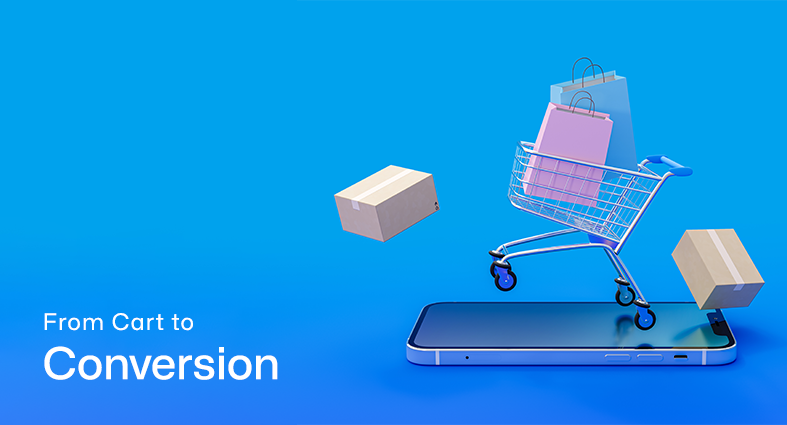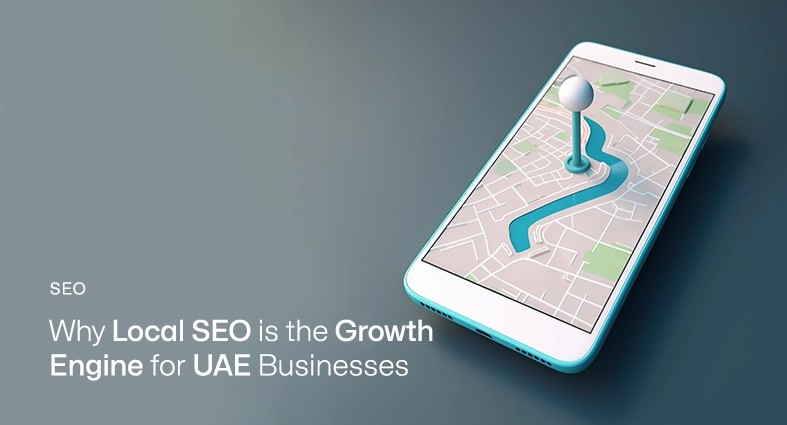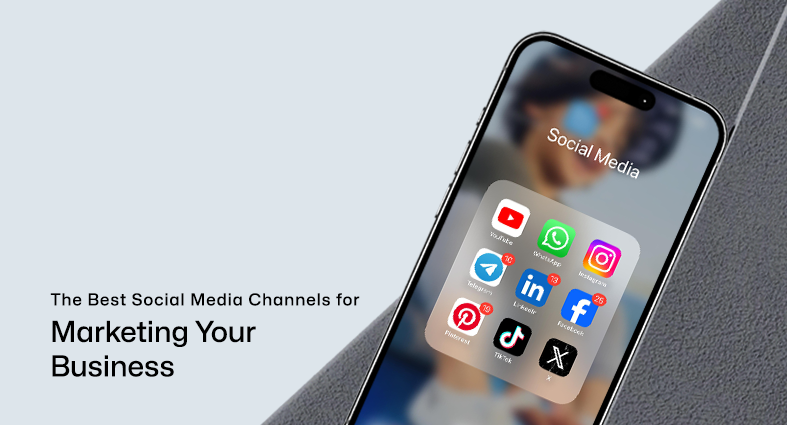Smartphones and tablets have become an integral part of our lives, empowering us to connect, communicate, and access information on the go. This mobile revolution has also revolutionized the way we shop and conduct business, giving rise to the phenomenon of mobile commerce (m-commerce). Mobile commerce has emerged as a game-changer in the world of e-commerce, offering convenience, accessibility, and personalized experiences to consumers. With the increasing number of mobile users worldwide and their growing reliance on mobile devices for various activities, businesses cannot afford to overlook the potential of mCommerce. In this article, we will explore the significance of mCommerce in the digital landscape and delve into the potential and benefits it offers to online businesses. We will discuss the key strategies and considerations for embracing m-commerce, as well as the challenges and trends shaping the future of mobile commerce. By understanding and harnessing the power of m-commerce, businesses can unlock new growth opportunities, engage with their target audience, and stay ahead in the competitive digital marketplace.
Benefits of mCommerce
The benefits of mCommerce for online businesses are vast and compelling. It allows businesses to reach a wider audience by tapping into the vast pool of mobile users. With the convenience of shopping anytime and anywhere, consumers are more likely to engage in impulsive buying decisions, leading to increased sales and revenue. It also provide a seamless and personalized shopping experience, fostering customer loyalty and repeat purchases. The potential of mCommerce extends beyond traditional online retail. It encompasses a wide range of industries, including travel, food delivery, banking, and entertainment. From booking flights and hotels to ordering food or transferring funds, the power of mCommerce is transforming various sectors, simplifying processes, and enhancing user experiences.
Key considerations for mCommerce strategy
- Mobile-First Approach: Designing and optimizing the user experience specifically for mobile devices is crucial. This means creating responsive and mobile-friendly interfaces, optimizing loading times, and ensuring intuitive navigation that adapts seamlessly to smaller screens.
- Streamlined Checkout Process: Simplifying the mobile checkout process is paramount to reducing cart abandonment rates. Implementing features like guest checkout, one-click payments, and mobile wallet integrations can enhance the convenience and expedite the purchase process.
- Cross-Platform Compatibility: With a wide variety of mobile devices and operating systems in the market, ensuring cross-platform compatibility is essential. Businesses should thoroughly test their mCommerce solutions across different devices and platforms to deliver a consistent experience to all users.
- Security and Trust: Establishing trust is crucial in mCommerce. Implementing robust security measures, such as SSL certificates, encryption protocols, and secure payment gateways, helps protect sensitive customer information and instills confidence in the transaction process.
- Personalization and Customization: Leveraging customer data and preferences to deliver personalized experiences can significantly enhance the mCommerce experience. Recommending tailored products, offering personalized promotions, and providing relevant content based on user behavior can lead to increased customer engagement and conversions.
- Integration with Backend Systems: Seamless integration between mCommerce platforms and backend systems, such as inventory management and order fulfillment, is essential for efficient operations. Automation and synchronization of data ensure accurate inventory updates, order tracking, and smooth order fulfillment processes.
Mobile Shopping Apps
Mobile shopping apps have emerged as the future of mCommerce, revolutionizing the way customers engage with online businesses. These dedicated apps offer a seamless and personalized shopping experience, allowing users to browse products, make purchases, and track orders with ease. With their user-friendly interfaces, push notifications, and personalized recommendations, mobile shopping apps have become a powerful tool for businesses to engage and retain customers. They enable businesses to build customer loyalty through enhanced convenience, customized experiences, and exclusive offers. By leveraging the features and functionalities of mobile shopping apps, businesses can tap into the growing mobile market and stay ahead of the competition in the ever-evolving world of e-commerce.
The benefits of dedicated mobile shopping apps
Dedicated mobile shopping apps have become a game-changer for businesses in the world of mCommerce. These apps offer a range of benefits that can significantly enhance the customer experience and boost sales. Firstly, mobile shopping apps provide a seamless and user-friendly interface tailored specifically for mobile devices. This optimized user experience translates into faster load times, easier navigation, and intuitive browsing, leading to increased customer satisfaction and higher conversion rates. Secondly, mobile shopping apps allow businesses to leverage push notifications to engage with customers directly. This feature enables personalized and targeted marketing, such as sending notifications about exclusive deals, discounts, or abandoned cart reminders. By staying connected with customers through real-time notifications, businesses can drive engagement, encourage repeat purchases, and build brand loyalty.
Moreover, dedicated mobile apps provide businesses with valuable insights into customer behavior and preferences. Through app analytics, businesses can gather data on user interactions, purchase patterns, and other metrics, enabling them to refine their marketing strategies and offer personalized recommendations. This data-driven approach enhances customer satisfaction and facilitates personalized shopping experiences, ultimately leading to increased customer loyalty and higher customer lifetime value.
Building customer loyalty
Personalization is a key driver of customer loyalty in the realm of mobile shopping apps. By tailoring the app experience to individual users’ preferences, businesses can create a sense of exclusivity and relevance, fostering stronger connections with customers. One way to achieve personalization is through user profiles and preferences. Mobile shopping apps can allow users to create personalized profiles where they can save their preferences, sizes, and other relevant information. This allows the app to curate product recommendations, offers, and promotions tailored specifically to each user’s preferences and past behavior.
In addition, mobile shopping apps can leverage location-based services to offer localized and contextually relevant experiences. By utilizing GPS technology, the app can provide users with personalized recommendations based on their current location, such as nearby stores, promotions, or events. This level of personalization enhances convenience and creates a more engaging and tailored experience for users.
Key features and functionalities
- Intuitive User Interface: A successful mobile shopping app should have a clean and intuitive user interface that makes it easy for customers to navigate, search for products, and access key features.
- Personalized Product Recommendations: By leveraging customer data and browsing behavior, mobile shopping apps can provide personalized product recommendations, creating a tailored shopping experience that increases customer engagement and conversions.
- Seamless Checkout Process: Simplifying the checkout process is crucial to prevent cart abandonment. Mobile shopping apps should offer a streamlined and user-friendly checkout flow, with features like saved payment details, guest checkout, and multiple payment options.
- Wishlist and Favorites: Including wishlist and favorites functionality allows users to save products for later and facilitates quick access to desired items, encouraging repeat visits and purchases.
- Ratings and Reviews: Integrating ratings and reviews within the app helps users make informed purchasing decisions and builds trust in the brand and its products.
- Social Sharing and Integration: Enabling social sharing functionality allows users to share products and their shopping experience with their network, increasing brand visibility and potential customer reach.
- Order Tracking and Notifications: Providing real-time order tracking and status updates keep customers informed about their purchases, enhancing transparency and customer satisfaction.
- Loyalty Programs: Incorporating loyalty programs, reward systems, or point accumulation features within the app incentivizes customers to engage more frequently and make repeat purchases.
- In-app Support and Assistance: Offering in-app customer support, such as live chat or chatbot integration, ensure prompt assistance and helps resolve customer queries and concerns, fostering a positive customer experience.
Responsive E-commerce Websites
With the increasing number of people using smartphones and tablets to browse and shop online, it is essential to cater to their needs by offering a mobile-friendly website. A responsive e-commerce website automatically adjusts its layout, content, and functionality based on the device being used. This eliminates the need for separate mobile and desktop versions of your site and ensures a consistent and cohesive experience across all devices. It allows your customers to easily navigate, browse, and make purchases, regardless of the device they are using.
Key elements of a mobile-optimized website
To create a mobile-optimized e-commerce website, several key elements need to be considered. First and foremost is the navigation. On smaller screens, it’s important to have a clear and user-friendly navigation menu that is easy to access and understand. Utilizing a hamburger menu or collapsible navigation can help conserve screen space while providing easy access to all the important sections of your website. Another essential aspect is the layout. Mobile screens have limited space, so it’s important to prioritize the most relevant content and optimize the layout accordingly. Use concise and engaging headlines, clear product images, and well-structured product descriptions to capture the attention of mobile users. Ensure that important information and calls to action are prominently displayed without overwhelming the screen.
Ensuring a seamless user experience
Providing a seamless user experience across different screen sizes and devices is paramount for a mobile-optimized e-commerce website. Users should be able to easily navigate, view products and complete transactions without encountering any usability issues or frustrations. The responsive design achieves this by dynamically adjusting the content and layout to fit the specific screen dimensions. It ensures that text is readable, images are appropriately sized, and buttons are easily tappable. By optimizing the loading speed and performance of your website, you can further enhance the user experience on mobile devices, as slow load times can lead to user frustration and abandonment. Additionally, implementing touch-friendly elements, such as larger buttons and easy-to-use forms, can improve the overall usability of your mobile site. Optimizing forms for mobile input, such as utilizing auto-fill and minimizing the number of required fields, simplifies the checkout process and reduces friction for mobile shoppers.
Mobile Checkout Optimization
Optimizing the checkout process is crucial for driving conversions and maximizing sales. Streamlining the mobile checkout process ensures a seamless and hassle-free experience for users, reducing cart abandonment rates and increasing the likelihood of completing purchases. By simplifying the path to purchase, businesses can improve their conversion rates and overall success in the mobile market. To enhance conversions, it is vital to streamline the mobile checkout process. This involves removing unnecessary steps and reducing the number of form fields to minimize user effort. Implementing a clear and intuitive user interface, with prominent calls-to-action, ensures a smooth and efficient checkout experience. Additionally, providing progress indicators and allowing users to review and edit their order details before finalizing the purchase increases transparency and reduces errors.
One-click payments and mobile wallet integrations offer convenience and speed during the checkout process. By allowing customers to securely store their payment information and complete purchases with a single click or touch, businesses can significantly improve conversion rates. Integrating popular mobile wallet platforms, such as Apple Pay, Google Pay, or PayPal, provides a seamless checkout experience and eliminates the need for manual entry of payment details. Security is a top concern for mobile shoppers. Addressing security concerns is crucial to building trust and confidence during mobile transactions. Implementing SSL certificates and utilizing secure payment gateways ensure the encryption of sensitive customer data, protecting it from unauthorized access. Displaying trust badges and security seals prominently on the checkout page instills confidence in customers. Additionally, providing clear and transparent information about privacy policies, data protection measures, and secure transaction protocols reassures customers of a safe and trustworthy mobile shopping experience.
Mobile-First Approach
A mobile-first approach prioritizes the user experience on mobile devices and ensures that the website is optimized for smaller screens, touch interactions, and limited bandwidth. This shift in perspective acknowledges the dominance of mobile browsing and recognizes the need to provide seamless and engaging experiences for mobile users. To embrace a mobile-first approach, businesses must reorient their design process and prioritize the mobile experience over the desktop. Instead of starting with the desktop design and then adapting it for mobile, the focus shifts to designing for mobile devices first and then scaling up for larger screens. This approach allows businesses to address the unique challenges and constraints of mobile devices, such as limited screen space, slower connections, and touch-based interactions.
Design Trends and Best Practices
- Minimalistic Design: Simplifying the interface and removing unnecessary clutter to create a clean and uncluttered user experience.
- Responsive Typography: Using fonts and typography that are legible and easily readable on small screens, ensuring a comfortable reading experience for users.
- Finger-Friendly Interactions: Designing touch-friendly buttons and navigation elements that are easy to tap and interact with using fingers.
- Visual Hierarchy: Employing visual cues and clear hierarchy to guide users’ attention and help them navigate through the website seamlessly.
- Mobile-friendly Images: Optimizing images for faster loading times and ensuring they display correctly on different screen sizes without compromising quality.
- Streamlined Checkout Process: Simplifying the checkout process specifically for mobile users, minimizing the number of steps and form fields to reduce friction and encourage conversions.
- Adaptive Layouts: Creating flexible layouts that adjust to different screen sizes and orientations, providing a consistent experience across various devices.
Future Trends in mCommerce Design
With the rapid advancements in technology, the world of mCommerce is constantly evolving. To stay ahead of the curve and meet the ever-changing needs of consumers, businesses must be aware of emerging trends in mCommerce design. This section will explore some of the exciting future trends that are shaping the landscape of mobile commerce.
- Augmented Reality (AR) and Virtual Reality (VR): AR and VR are revolutionizing the way consumers interact with products and make purchase decisions. AR allows users to overlay digital elements in the real world, providing immersive and interactive experiences. VR, on the other hand, creates a simulated environment that users can explore and interact with. In mCommerce, AR and VR technologies are being used to enhance the shopping experience. Retailers can enable customers to virtually try on clothing, visualize furniture in their homes, or even test drive virtual versions of cars. These technologies bridge the gap between the digital and physical worlds, providing customers with a more engaging and personalized shopping experience.
- Voice searches and AI-powered Assistants: Voice searches and AI-powered assistants, such as Siri, Google Assistant, and Alexa, have gained significant traction in recent years. The convenience and ease of use offered by voice commands have made them a popular choice among consumers. As a result, mCommerce is witnessing a shift towards voice-activated interactions. Consumers can now use their mobile devices or smart speakers to search for products, place orders, and get personalized recommendations. This trend is reshaping the way businesses optimize their mobile platforms. Voice search optimization, natural language processing, and machine learning algorithms are becoming crucial for delivering relevant and accurate results to voice queries.
- Consumer Behavior and Technology: Consumer behavior and technology are intertwined in the world of mCommerce. As technology continues to advance, consumer expectations and preferences also evolve. To thrive in the competitive mCommerce landscape, businesses must anticipate and adapt to these changes. One significant shift in consumer behavior is the growing preference for mobile-first experiences. Consumers expect seamless browsing, fast loading times, and intuitive navigation on their mobile devices. Therefore, businesses need to prioritize mobile optimization and ensure that their websites and apps provide exceptional user experiences across different devices and screen sizes.
Additionally, technological advancements such as 5G connectivity, machine learning, and data analytics are opening up new possibilities for personalized and context-aware mCommerce experiences. By harnessing these technologies, businesses can deliver targeted offers, optimize product recommendations, and provide tailored shopping experiences that resonate with individual customers. Moreover, staying up to date with emerging trends and technologies, such as mobile wallets, contactless payments, and biometric authentication, is essential. These innovations enhance convenience, security, and trust in mCommerce transactions, providing customers with seamless and frictionless shopping experiences.
Conclusion
In the fast-paced digital landscape, embracing the mobile revolution and harnessing the power of mCommerce is essential for online businesses to thrive. By optimizing their strategies and adapting to the evolving trends in mobile commerce design, businesses can unlock a world of opportunities and tap into a vast customer base. From embracing augmented reality (AR) and virtual reality (VR) to leveraging voice search and AI-powered assistants, businesses can enhance the shopping experience and create a competitive edge. Anticipating and adapting to evolving consumer behavior and technological advancements, such as mobile-first experiences, 5G connectivity, and personalized marketing, is crucial for success. By seizing the mobile revolution and unleashing the power of mCommerce, businesses can elevate their online presence, drive conversions, and establish themselves as leaders in the mobile-driven marketplace. Partner with Pentagon for cutting-edge eCommerce development solutions that drive conversions and fuel growth. From stunning mobile-responsive designs to seamless payment integration and advanced features, we deliver tailored solutions that empower your business in the digital landscape. Maximize your online potential with our expertise in eCommerce development, user experience optimization, and performance-driven strategies. Don’t miss out on the mobile revolution – contact us today and let’s take your eCommerce store to new heights!
services
Feel free to send us a message.
Please, share your thoughts, and let's chat over a cup of tea.



















